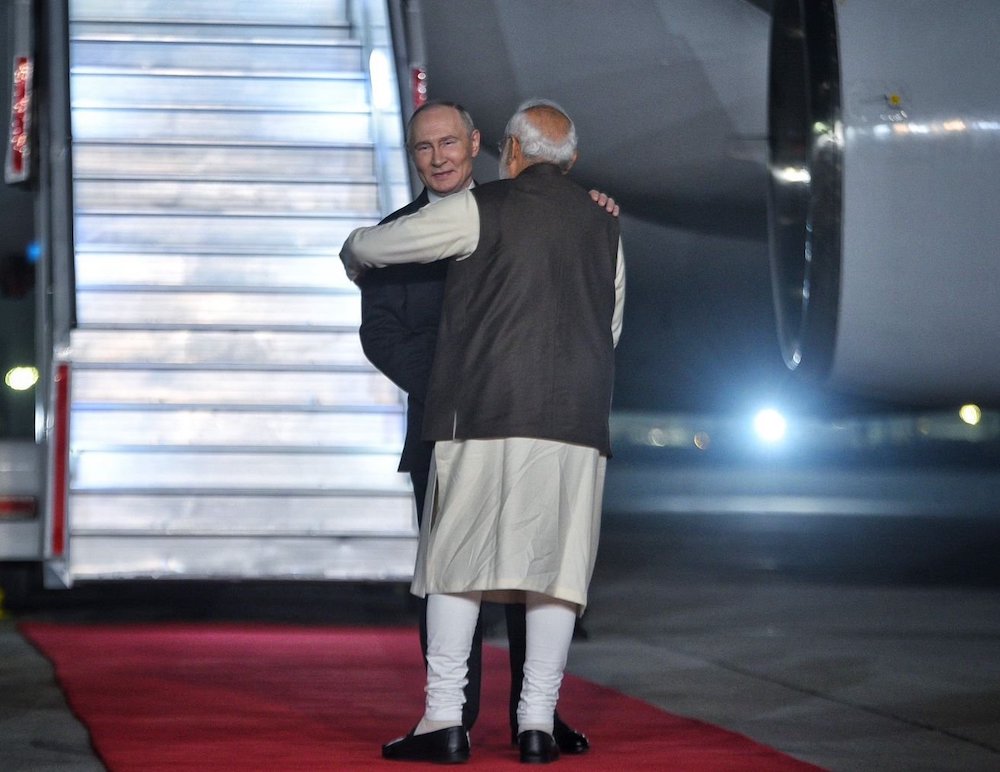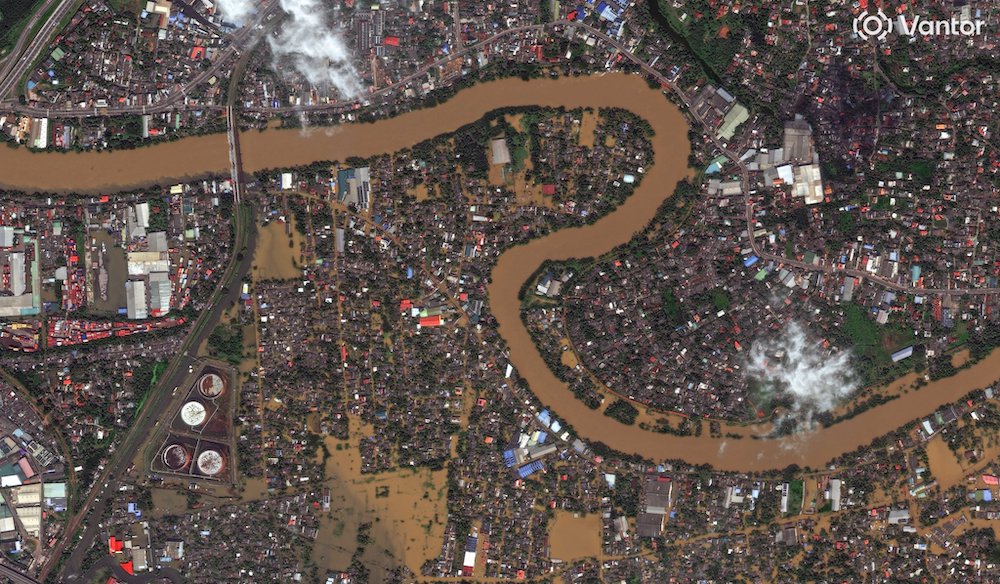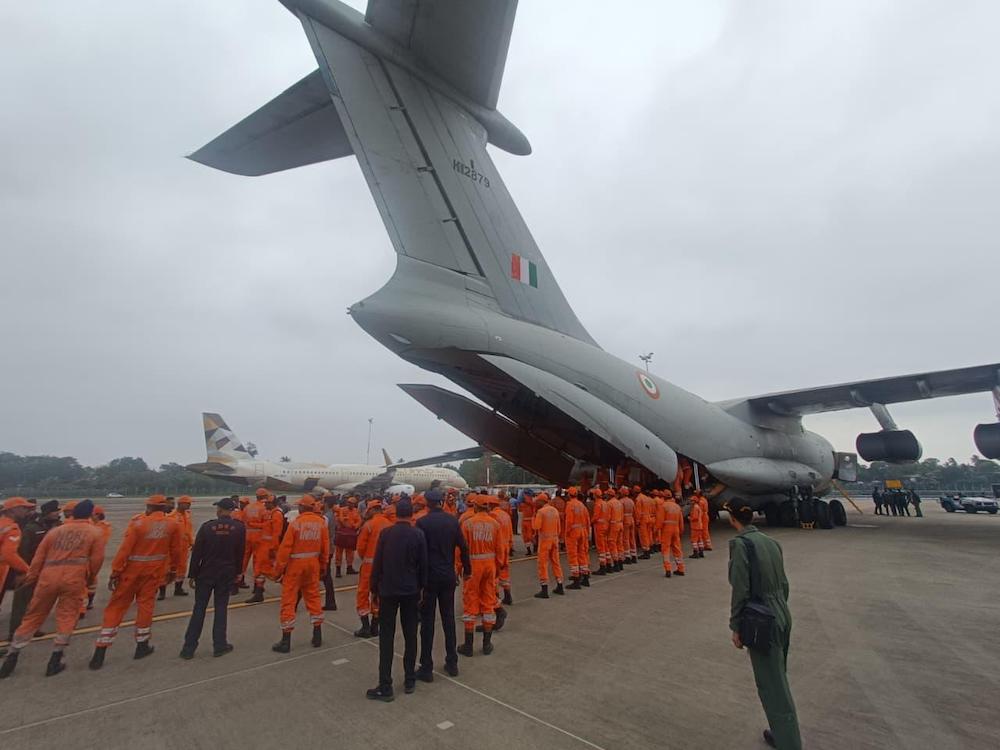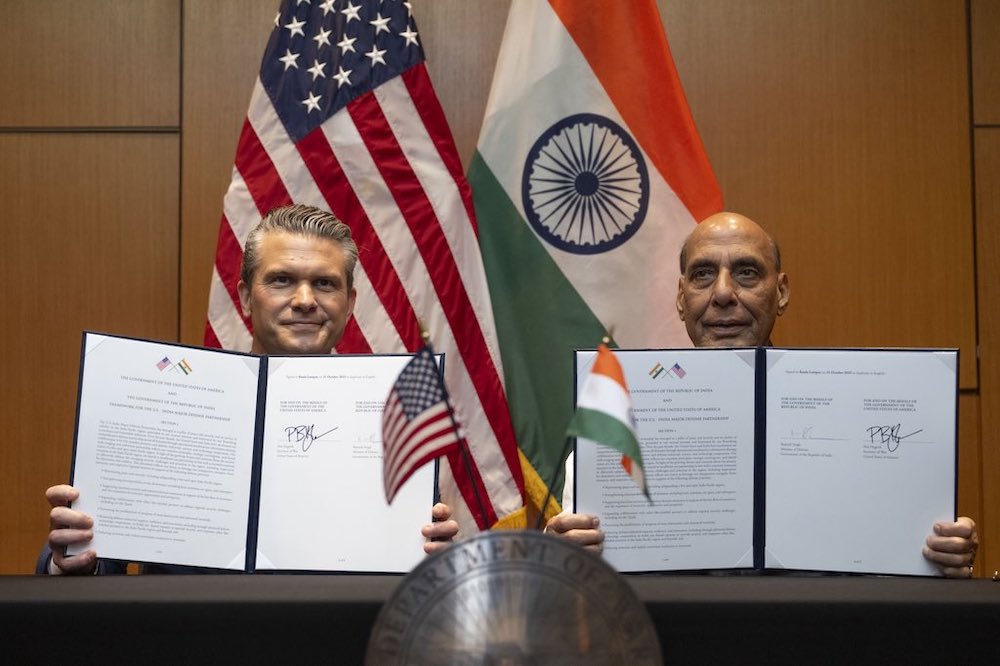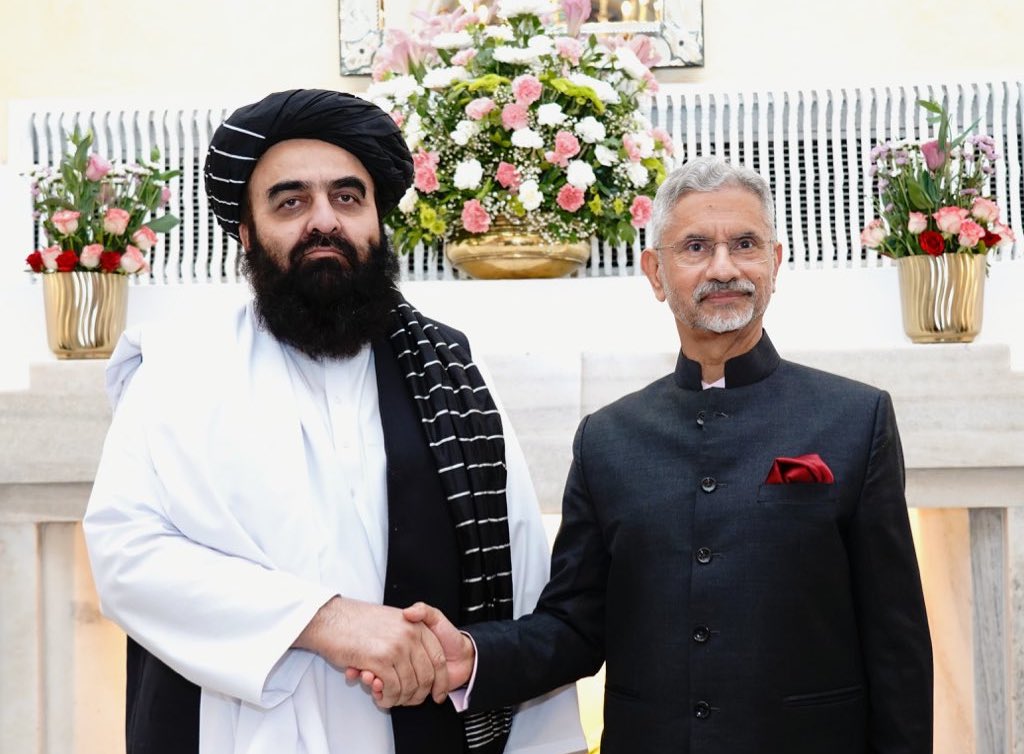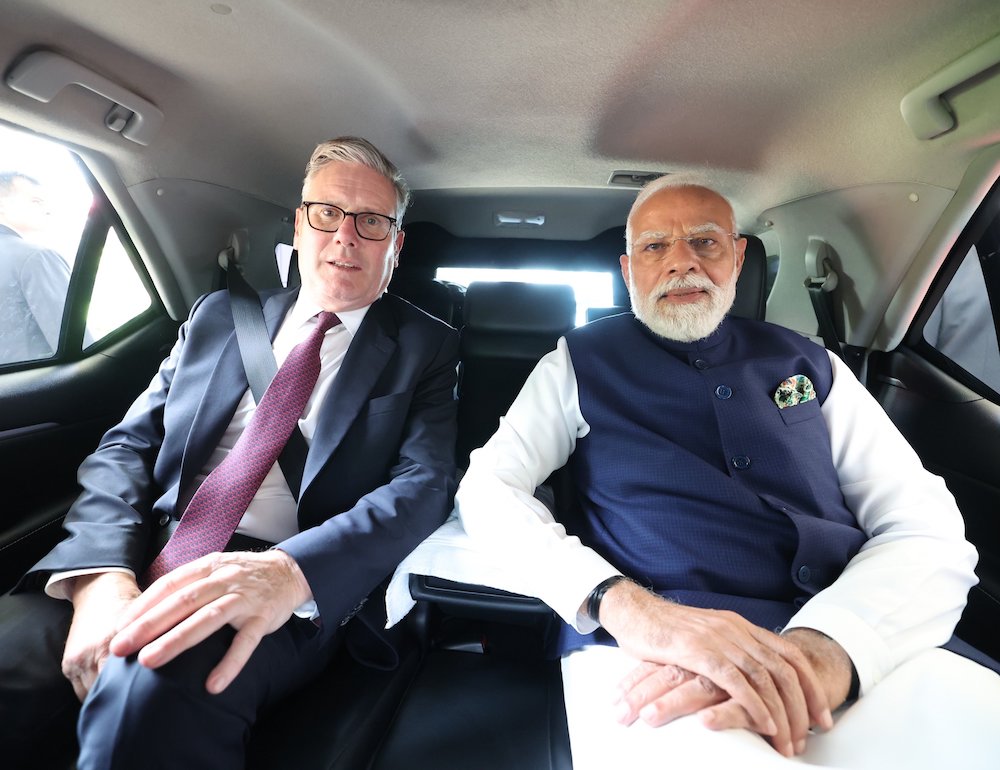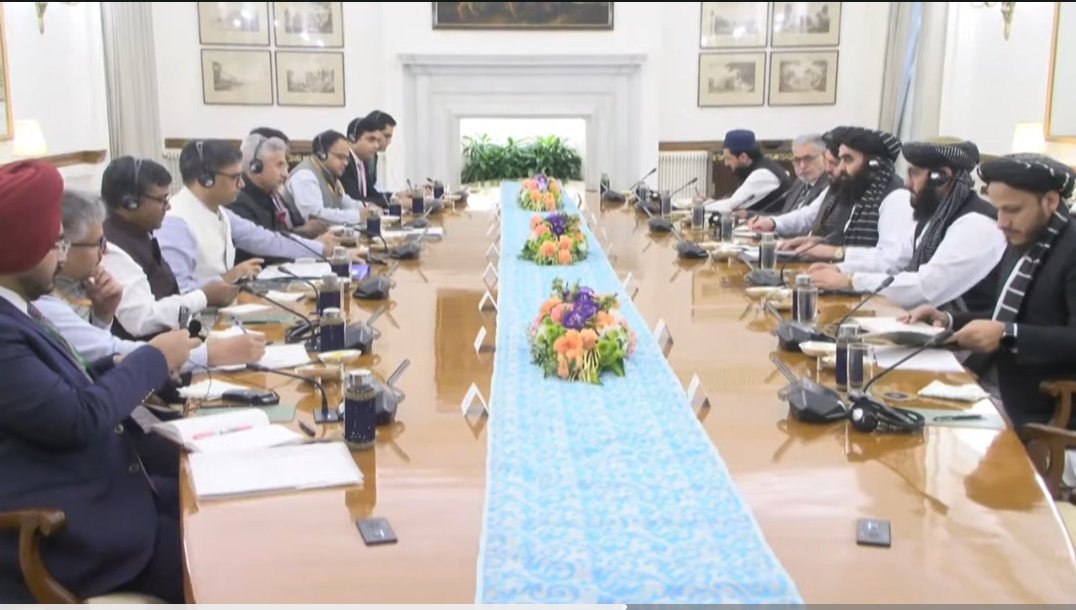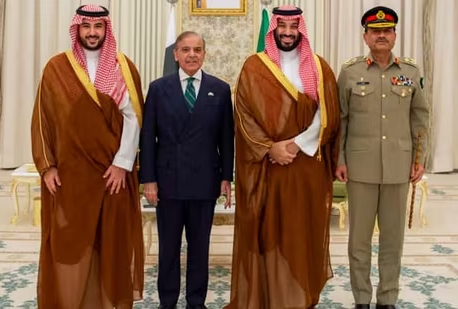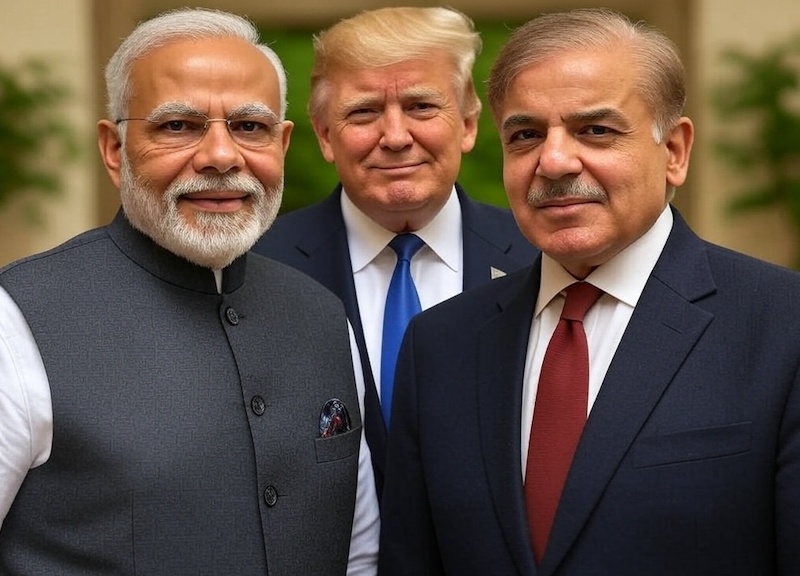 (India Sentinels illustration for representation.)
(India Sentinels illustration for representation.)
New Delhi: In a dramatic turn after four days of hostilities that brought South Asia to the brink, India and Pakistan agreed to a full cessation of hostilities effective from 5pm on Saturday, halting all military actions on land, air, and sea. The breakthrough follows India’s unprecedented Operation Sindoor – a series of precision air, drone, and missile strikes targeting terrorist infrastructure deep inside Pakistan and Pakistan-occupied Kashmir, in retaliation for the Pahalgam terror attack that claimed the lives of 27 tourists and a local pony operator.
India has confirmed this, shortly after the president of the United States, Donald Trump, announced the development on his Truth Social platform.
In a brief statement to the media on Saturday evening, the foreign secretary, Vikram Misri, said: “The director generals of military operations (DGMOs) of India and Pakistan have reached an agreement that both sides will cease all firing and military action on land, air and sea from 5pm today.” Misri also said the Pakistani DGMO had initiated the call to his Indian counterpart following which the breakthrough was reached.
The agreement marks a significant diplomatic breakthrough in the longstanding tensions between the two nuclear-armed neighbours.
About an hour before that, on Truth Social, Trump wrote that “after a long night of talks mediated by the US,” he was “pleased to announce” that “India and Pakistan have agreed to a full and immediate ceasefire.” Trump then went on to congratulate the two countries for using “common sense” and “great intelligence”.
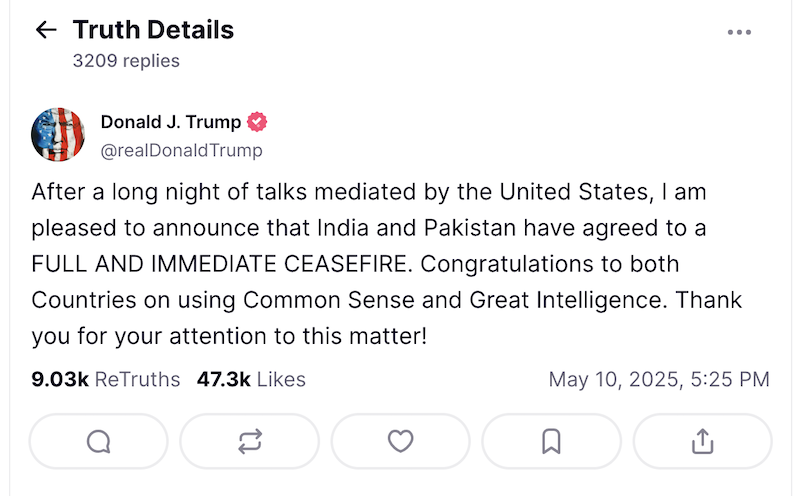
Soon after, the US secretary of state, Marco Rubio, said he and the US vice-president, JD Vance, engaged with Indian and Pakistani officials, including the prime ministers of both countries to bring the hostilities between the two countries to an end.
Taking to X, Rubio wrote that over the past 48 hours, Vance and he engaged with senior Indian and Pakistani officials, including the prime ministers, Narendra Modi and Shehbaz Sharif; India’s foreign minister, S Jaishankar; the Pakistan Army chief, General Asim Munir; the national security advisors of the two countries, Ajit Doval and Asim Malik.
Rubio announced that the two countries have agreed to an immediate ceasefire and to start talks on a broad set of issues at a neutral site.
Over the past 48 hours, @VP Vance and I have engaged with senior Indian and Pakistani officials, including Prime Ministers Narendra Modi and Shehbaz Sharif, External Affairs Minister Subrahmanyam Jaishankar, Chief of Army Staff Asim Munir, and National Security Advisors Ajit…
— Secretary Marco Rubio (@SecRubio) May 10, 2025
However, despite speculation about international mediation, government sources stressed that the agreement to cease hostilities was bilaterally negotiated, with no third-party involvement. While the US welcomed the development and Trump publicly congratulated both countries for their “common sense and great intelligence,” as cited above, Indian officials maintained that the process was entirely under the control of the two DGMOs.
The prime minister, Narendra Modi, reportedly instructed the national security advisor, Ajit Doval, and the foreign minister, S Jaishankar that any ceasefire would proceed solely on India’s terms. India made it clear that there would be no talks on other issues unless Pakistan took demonstrable steps against terrorism.
Genesis of the Crisis
The latest escalation traces back to April 22, when a devastating terror attack in Pahalgam, Jammu & Kashmir, left 28 civilians dead. Indian authorities swiftly attributed the attack to Pakistan-based terrorist groups, vowing a decisive response. On the intervening night of May 6 and 7, India launched Operation Sindoor, unleashing missiles and stand-off weapons in 25 minutes on nine identified terror bases in Pakistan and Pakistan-occupied Kashmir, including Pakistan’s heartland province of Bahawalpur.
Indian Air Force jets targeted key Pakistani airbases at Rafiqui, Murid, and Chaklala (Nur Khan), crippling command-and-control centres believed to be central to cross-border drone and missile operations. The Indian military maintained that all strikes were limited to “identified military targets” linked to terrorist infrastructure, with the stated aim of degrading Pakistan’s capacity to support and launch attacks against India.
Escalation and Retaliation
Pakistan responded with a series of coordinated drone and missile attacks targeting Indian military infrastructure across 26 locations along the entire western front, from Ladakh’s Leh in north to Gujarat’s Sir Creek in the south. Indian air-defence systems, including the indigenous D4 “detect, deter, and destroy” network, successfully intercepted and neutralized most of these threats, preventing significant casualties or damage.
The confrontation also spilled into cyberspace. Pakistani hackers claimed to have launched cyberattacks on Indian military satellites and government email servers, though Indian officials have yet to confirm any breaches. Meanwhile, Pakistan reportedly fired a Fatah-II guided artillery rocket towards Delhi, which was intercepted near Sirsa Air Force Station in Haryana.
Heavy fighting erupted along the international border (IB) and line of control (LoC) in Jammu & Kashmir, which killed at least 16 people and displaced thousands, especially from the Poonch district. Indian troops retaliated but Pakistani shelling continued.
Shelling by Pakistani forces killed Raj Kumar Thapa, the commissioner of Rajouri, and five others. The defence ministry accused Pakistan of targeting civilian areas, including a Hindu temple in Jammu, and using armed drones against civilian and religious sites.
Operation Sindoor Strategic Calculus
Operation Sindoor marked a significant escalation in India’s counterterrorism strategy. Indian officials emphasized that the operation was meticulously planned to avoid civilian casualties, focusing solely on military and terror-linked infrastructure. The strikes reportedly targeted command and control nodes, radar sites, and weapons storage facilities, aiming to cripple Pakistan’s ability to launch further attacks.
The Indian Army also responded robustly to Pakistani drone incursions, particularly in Punjab and Jammu. Quick-reaction air-defence units destroyed multiple kamikaze drones, including Byker YIHA III models, before they could inflict harm on civilian areas. No casualties or property damage were reported, and initial analysis indicated the drones carried high-explosive payloads intended for mass casualties.
India’s indigenous D4 drone defence system, developed by the Defence Research and Development Organisation (DRDO), played a major role in neutralizing Pakistani drone threats. The system, likened to Israel’s Iron Dome, proved its effectiveness in protecting both military and civilian targets.
Civilian Toll
The four-day confrontation took a heavy toll on civilian life, particularly in border areas. As India Sentinels had reported earlier on Saturday, India said Pakistani retaliatory strikes targeted civilian infrastructure, including schools and medicare centres at airbases in Srinagar, Avantipur, and Udhampur. The shelling in Rajouri resulted in the deaths of the city’s commissioner and five others. The defence ministry labelled these actions as “deplorable and cowardly,” underscoring the risks posed to non-combatants throughout the escalation.
Looking Ahead
The ceasefire brings relief to millions of people on both sides of the border, but the situation remains precarious. India has warned that any future act of terror emanating from Pakistan will be treated as an act of war, signalling a new, more assertive doctrine in dealing with cross-border terrorism.
The next scheduled conversation between the DGMOs on May 12 will be closely watched for signs of de-escalation or renewed tension.

